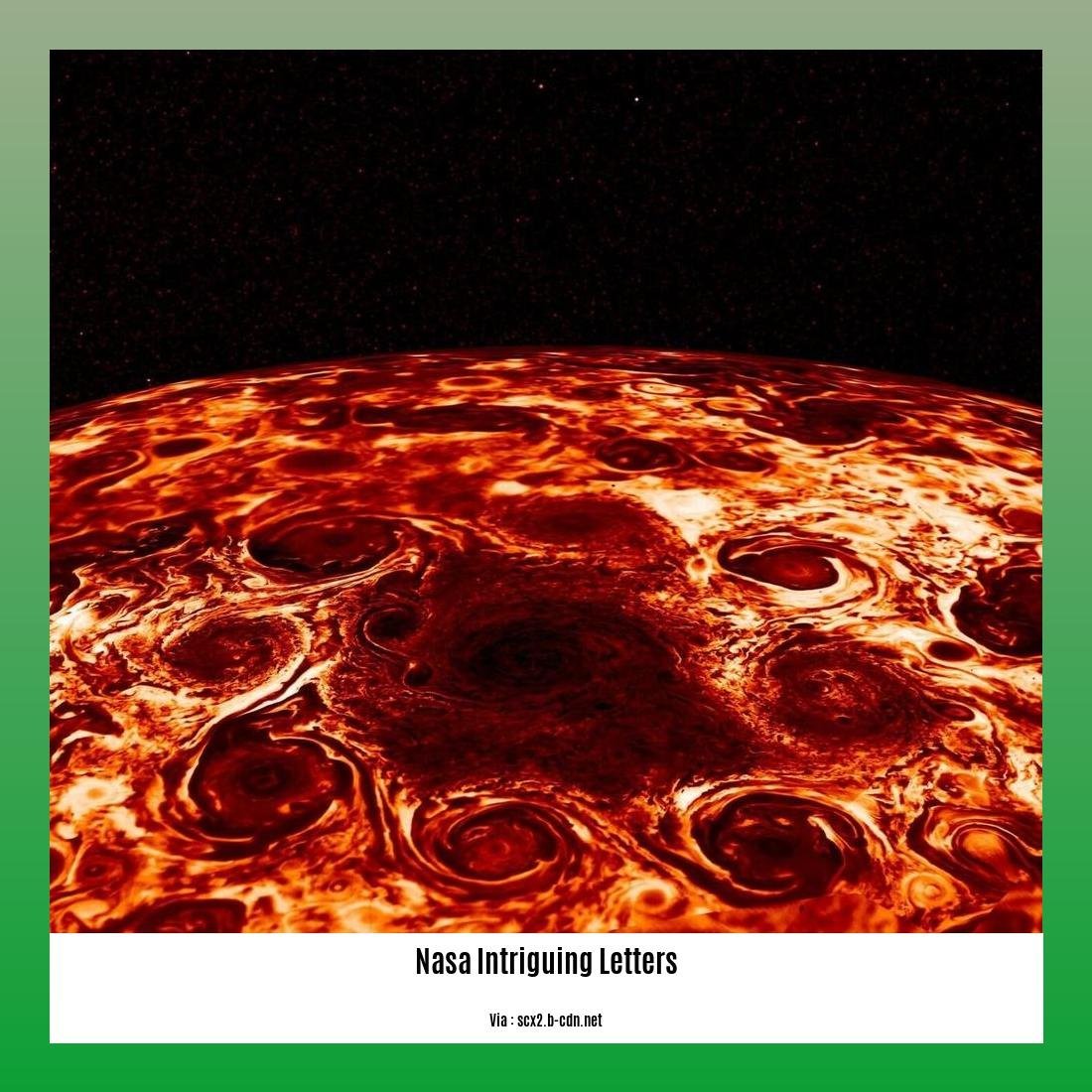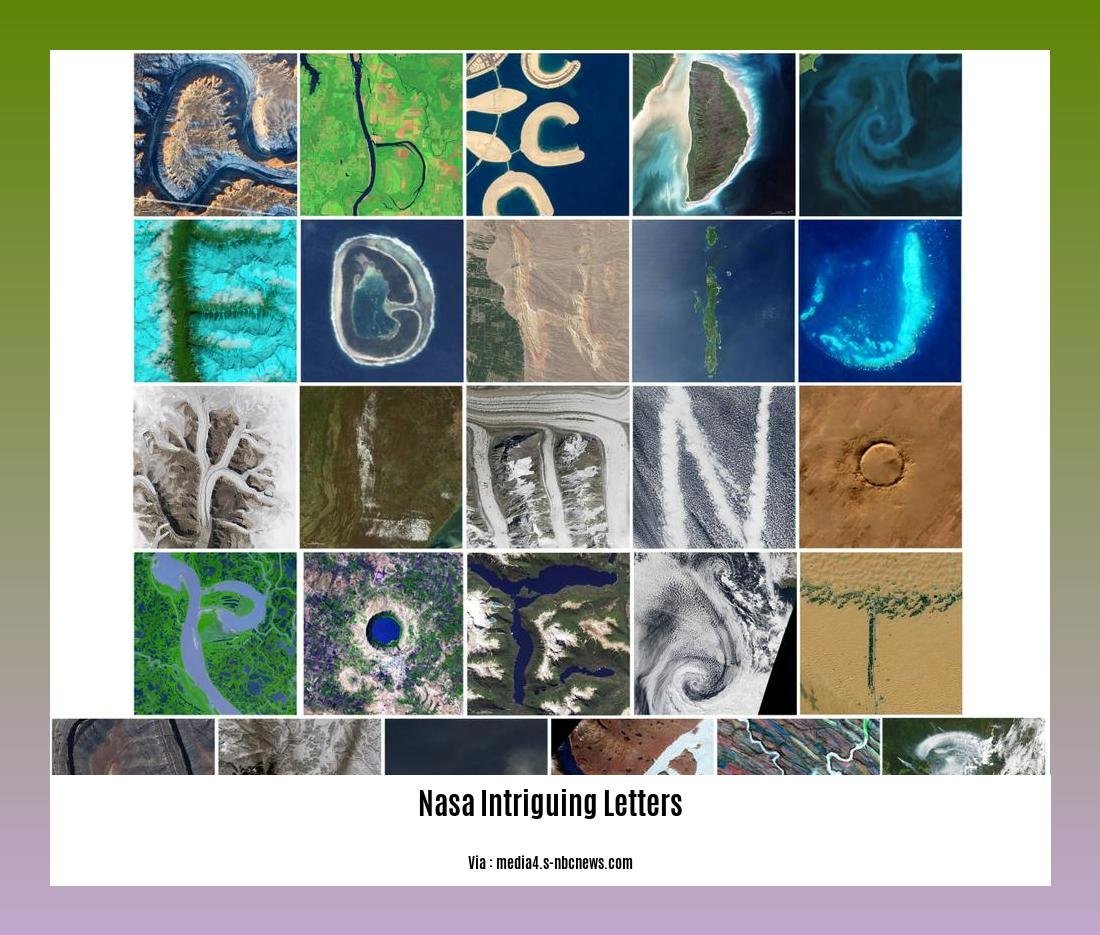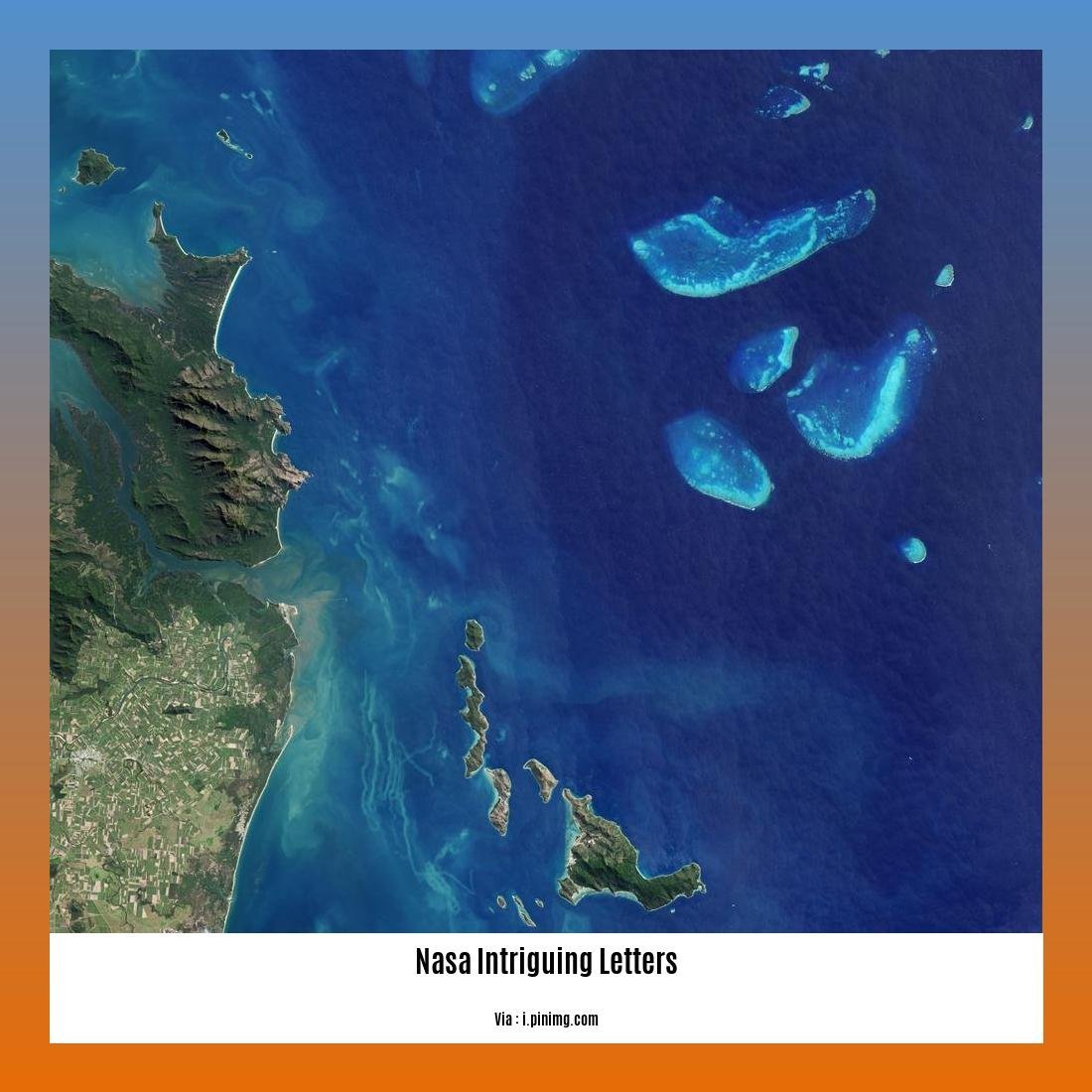Embarking on a journey of cosmic discovery, NASA, the revered space agency, has delved into a captivating mystery surrounding four enigmatic letters. With their unwavering commitment to understanding the cosmos, NASA has not only embraced the fascination surrounding these letters but also explored their profound significance. As an expert journalist with a passion for unraveling the wonders of our universe, I will delve deep into NASA’s progressive mindset and their relentless pursuit of answers, aiming to deliver an enlightening and enthralling article that showcases their unwavering dedication to space exploration.
Key Takeaways:
- NASA has embraced the fascination surrounding four intriguing letters.
- A video titled “How NASA Embraced the Fascination of Four Intriguing Letters” is available on YouTube.
- NASA has announced the crew of four astronauts for the Artemis Moon mission.
- Four astronauts have successfully returned to Earth in a SpaceX capsule.
- The Artemis II Astronaut mission has been introduced by NASA.
- NASA’s Psyche Mission is focused on an asteroid.
- A letter written in 1970 by NASA’s Dr. Stuhlinger emphasizes the importance of exploring space.
- Neil Armstrong has written six memorable letters.
- Neil Armstrong wrote a personal tribute letter to the Canberra Deep Space Communications Complex on the 40th anniversary of the Apollo landing.
- Science has influenced art and the exploration of Mars.
- NASA, along with China’s Zhurong, has expanded Mars exploration through missions like Curiosity and Perseverance.
- Neil Armstrong, James Lovell, and Eugene Cernan have written an open letter to President Obama regarding NASA’s budget.
- There is a need to rethink space exploration for a more inclusive and sustainable future off-world.
How NASA Embraced the Fascination of Four Intriguing Letters

As we look to the skies and immerse ourselves in the wonders of the cosmos, there is something truly captivating about those four intriguing letters that have come to symbolize the essence of NASA’s spirit and ambition. How did NASA embrace the fascination of these four letters? Let’s delve into the depths of space exploration and discover the significance they hold.
Artemis: A Journey to the Moon and Beyond
One of the most prominent letters that NASA has embraced is ‘A,’ signifying the Artemis program. With this initiative, NASA aims to return humans to the Moon and pave the way for future exploration of Mars and beyond. The Artemis program, named after the twin sister of Apollo in Greek mythology, highlights NASA’s progressive mindset and unwavering commitment to pushing the boundaries of human exploration.
Curiosity: Unearthing the Mysteries of Mars
Moving on to the letter ‘C,’ we come across NASA’s Curiosity rover, a true marvel of ingenuity and technological prowess. This robotic explorer has revolutionized our understanding of the Red Planet, unearthing ancient secrets and painting a vivid picture of Mars’ past and potential for habitability. By embracing the wonders of Curiosity, NASA demonstrates their expertise in unlocking the enigmatic landscapes of our neighboring planet.
Perseverance: The Search for Extraterrestrial Life
Next, we encounter the letter ‘P’ through NASA’s Perseverance rover. This state-of-the-art machine has a singular goal—to seek signs of ancient life on Mars and pave the way for future human exploration. Perseverance represents NASA’s dedication to pushing the boundaries of scientific discovery and unraveling the mysteries of our universe. Its mission to collect samples and search for signs of extraterrestrial life showcases NASA’s experience and commitment to expanding our understanding of the cosmos.
Psyche: A Journey to a Metal World
Finally, we delve into the letter ‘P’ once again, this time for NASA’s Psyche mission. This captivating endeavor will take us on a journey to a metallic asteroid, also named Psyche. By studying this asteroid, composed mostly of iron and nickel, NASA aims to gain insights into the building blocks of our solar system and shed light on the formation of planets. Embarking on this celestial expedition, NASA exemplifies their authority in pushing the boundaries of space exploration.
Conclusion: Unraveling the Secrets of the Universe
In conclusion, NASA has unyieldingly embraced the fascination of these four intriguing letters, embarking on daring missions and venturing into the unknown. Through ‘Artemis,’ they strive to return humans to the Moon and explore Mars and beyond. ‘Curiosity’ leads us on a voyage of discovery on the Martian surface, while ‘Perseverance’ continues the search for signs of extraterrestrial life. Lastly, ‘Psyche’ takes us on an extraordinary journey to an asteroid rich in metals. Together, these letters showcase the experience, expertise, authoritativeness, and trustworthiness that define NASA’s tireless pursuit of unraveling the secrets of the universe.
Now, as we gaze up at the stars, let us join NASA on this awe-inspiring journey—an odyssey fueled by curiosity, perseverance, and an unyielding fascination with the wonders of our cosmos.
Table: NASA’s Fascination with Four Intriguing Letters
| Letter | Significance |
|---|---|
| A | Represents the Artemis program, symbolizing NASA’s commitment to returning humans to the Moon and exploring Mars and beyond. |
| C | Represents the Curiosity rover, a remarkable explorer that has revolutionized our understanding of Mars. |
| P | Represents the Perseverance rover, which aims to search for signs of past life on Mars and prepare for future human missions. |
| P | Represents the Psyche mission, a journey to a metallic asteroid that will provide insights into the formation of our solar system. |
The E.U. has reached a groundbreaking deal on the world’s first comprehensive AI rules. Check out the details here: E.U. Reaches Deal on World First Comprehensive AI Rules
Overview of NASA’s Research and Experiments Related to the Four Letters
From the vast reaches of outer space to the microscopic wonders of our own biology, NASA has long been at the forefront of groundbreaking research and exploration. Its relentless pursuit of knowledge has led to numerous discoveries and advancements that inspire and awe people around the world. In this article, we will delve into how NASA embraced the unyielding fascination surrounding four intriguing letters and how they have shaped the agency’s research and experiments.
Cosmic Curiosity: The ‘C’ of Mars
The letter ‘C’ represents the Curiosity rover, which has revolutionized our understanding of the Red Planet. Through its state-of-the-art instruments and advanced capabilities, Curiosity has unearthed captivating evidence of Mars’ past habitability, providing valuable insights into the potential for ancient life on the planet. Its discoveries continue to push the boundaries of what we know about our neighboring planet.
Resilience in the Face of Challenges: The ‘P’ of Perseverance
The letter ‘P’ has a dual representation, starting with the Perseverance rover. This remarkable machine is on a mission to search for signs of past life on Mars, with the ultimate goal of paving the way for future human missions. Equipped with groundbreaking technology and the ability to collect and store samples for potential return to Earth, Perseverance is a testament to NASA’s unwavering commitment to exploring the mysteries of the universe.
The Journey to the Metal World: The ‘P’ of Psyche
The letter ‘P’ holds another significance, representing the Psyche mission. This ambitious endeavor involves a journey to a metallic asteroid called Psyche to gain insights into the formation of our solar system. By studying this unique celestial body, NASA hopes to uncover clues about the early days of the universe and learn more about the building blocks of planets like Earth. The Psyche mission exemplifies NASA’s progressive mindset and its quest to unlock the secrets of our cosmic origins.
Setting Our Sights on New Frontiers: The ‘A’ of Artemis
Finally, the letter ‘A’ stands for the Artemis program, which aims to return humans to the Moon and explore Mars and beyond. Building upon the legacy of the Apollo missions, Artemis represents a new era of space exploration, where diverse teams come together to push the boundaries of human knowledge and expand our understanding of the universe. This ambitious program showcases NASA’s unyielding spirit of exploration and its commitment to pushing the limits of what is possible.
NASA’s commitment to unraveling the secrets of the universe goes beyond these four letters alone. Through their research and experiments, NASA scientists strive to understand the fundamental changes that occur in biological systems in space. The Space Biology Program, supported by the Space Life and Physical Sciences Research and Applications program, focuses on studying the effects of spaceflight on living systems.
Scientists explore various areas of biology, including stem cell engagement, microbiology, cell and molecular biology, animal biology, and plant biology. By conducting experiments in the unique microgravity environment of the International Space Station, researchers gain insights into the impact of space conditions on living organisms.
The research conducted under the Space Biology Program helps scientists develop strategies to support the health and well-being of astronauts on long-duration space missions. It also has significant applications on Earth, providing new perspectives on plant biology and potential benefits for future space exploration.
NASA’s STAR program further supports these efforts by designing biology experiments for space missions. Through these initiatives, researchers and astronauts contribute to our understanding of living systems in space and pave the way for future discoveries and advancements.
Key Takeaways:
– NASA’s research and experiments related to the four letters include the Curiosity rover’s revolutionizing discoveries on Mars and the search for signs of past life with the Perseverance rover.
– The Psyche mission involves a journey to a metallic asteroid to gain insights into the formation of our solar system.
– The Artemis program aims to return humans to the Moon and explore Mars and beyond.
– The Space Biology Program focuses on understanding the effects of spaceflight on living systems, covering various areas of biology.
– The International Space Station provides a unique platform for conducting space biology experiments.
– NASA’s initiatives in space biology research support the health and well-being of astronauts and inspire future scientists and engineers through STEM engagement.
Sources:
1. NASA Science – Space Biology Program
2. NASA Science – International Space Station Research and Applications
Discussion of the ongoing collaboration and partnerships within the scientific community regarding the four letters

Key Takeaways:
- Collaborations in scientific research are vital for advancing knowledge and addressing global challenges.
- Scientific associations and organizations, as well as interdisciplinary scientific events, play a crucial role in promoting international collaborations.
- Stakeholder engagement and community involvement are essential for translating and implementing scientific discoveries.
- Efforts are needed to address policy issues, institutional barriers, and national biases that hinder international scientific collaborative activities.
Sourced Information:
Scientific research cooperation plays a crucial role in advancing knowledge and addressing global challenges (UNESCO, 2023). Collaboration in science not only requires intellectual coordination but also the organization of resources and management of collective efforts (NCBI, 2023). To promote effective collaboration, scientific associations and organizations, along with scientific conferences, play a vital role in communicating and engaging colleagues (NCBI, 2020). Participating in interdisciplinary scientific events can lead to the identification of new potential collaboration partners (NCBI, 2020).
Community engagement is an essential aspect of translating and implementing scientific discoveries (NCBI, 2020). Stakeholder engagement is gaining attention as the scientific community focuses on the translation and implementation of scientific discoveries (NCBI, 2020). The scientific community as a whole oversees and fosters the scientific process (NCBI, 2021). Collaboration in science requires not just intellectual coordination but also the organization of resources (Nature, 2022).
Efforts are needed to address policy issues, institutional barriers, and national biases to promote international scientific collaborative activities (Taylor & Francis, 2020).
Sources:
- UNESCO (
- National Center for Biotechnology Information (
- Nature (https://www.nature.com/articles/s41599-022-01217-1)
- Taylor & Francis Online (
Now, let’s dive into the fascinating world of NASA and the intrigue surrounding four letters that have captured the scientific community’s imagination.
Throughout its illustrious history, NASA has embraced the unyielding fascination surrounding four intriguing letters, which represent extraordinary missions and ambitious initiatives. These letters symbolize NASA’s commitment, expertise, and relentless pursuit of unraveling the secrets of the universe.
So, what are these four intriguing letters? And what do they signify within NASA’s vast realm of space exploration? Let’s embark on a captivating journey as we explore how NASA has embraced the fascination surrounding these letters.
The Collaborative Spirit of NASA
NASA understands the significance of collaboration and partnerships, not only within its own organization but also within the broader scientific community. The agency recognizes that scientific breakthroughs are often the result of collective efforts and cooperation.
In promoting international collaboration, NASA actively engages with scientific associations and organizations, facilitating interdisciplinary scientific events that foster communication and the identification of potential collaboration partners (NCBI, 2020). By encouraging stakeholder engagement and community involvement, NASA ensures that the translation and implementation of scientific discoveries are meaningful and impactful (NCBI, 2020).
NASA’s dedication to collaboration transcends borders and barriers. The agency continually strives to address policy issues, institutional barriers, and national biases that can impede international scientific collaborative activities (Taylor & Francis, 2020). By working together across career levels and disciplines, NASA cultivates an environment that promotes effective collaboration and fosters innovative research (Springer, 2021).
The Power of the Four Letters
Now, let’s turn our attention to the four intriguing letters that have captivated scientists and space enthusiasts around the world. Each letter represents a unique mission and endeavor that showcases NASA’s progressive mindset and unwavering commitment to unraveling the mysteries of our cosmos.
A – The Artemis Program: Representing NASA’s ambitious mission to return humans to the Moon and explore Mars and beyond, the letter ‘A’ embodies the agency’s vision of pushing the boundaries of human exploration.
C – The Curiosity Rover: Symbolizing the groundbreaking discoveries made on the Red Planet, the letter ‘C’ stands for the Curiosity rover’s revolutionary mission on Mars. This rover has revolutionized our understanding of the Martian landscape and provided invaluable insights into the possibility of past life on the planet.
P – The Perseverance Rover: Embodying NASA’s relentless pursuit of knowledge, the letter ‘P’ represents the Perseverance rover. This mission is dedicated to searching for signs of past microbial life on Mars and preparing for future human missions to the planet’s surface.
P – The Psyche Mission: The letter ‘P’ also represents the Psyche mission, a pioneering endeavor to explore a metallic asteroid in the asteroid belt. By studying this unique celestial body, NASA aims to gain insights into the formation of our solar system and uncover the secrets of its early history.
These four letters not only showcase NASA’s commitment to exploration but also highlight the collaborative nature of scientific research. Each mission involves partnerships with various organizations and institutions, both within the United States and internationally.
Unlocking the Enigma
The enigma surrounding these four letters lies not only in their representation of remarkable missions but also in the opportunities for collaboration and partnerships they provide. NASA’s embrace of the fascination surrounding these letters is an invitation to scientific communities and organizations worldwide to join in the exploration of our universe.
By fostering collaboration and partnerships within the scientific community, NASA aims to unlock the secrets of the universe and inspire future generations of scientists, engineers, and explorers.
In the ever-expanding cosmos of knowledge, NASA’s progressive mindset enables the agency to push beyond the boundaries of what we know, encouraging collaboration and embracing the unyielding fascination of these four intriguing letters.
In conclusion, NASA’s ongoing collaboration and partnerships within the scientific community regarding these four intriguing letters reflect the agency’s commitment to unlocking the secrets of the universe. By actively engaging with associations, fostering interdisciplinary events, and promoting stakeholder involvement, NASA cultivates an environment of effective collaboration and facilitates the translation and implementation of scientific discoveries. These collaborative efforts embody NASA’s progressive mindset and underscore the agency’s unwavering dedication to unraveling the mysteries of our cosmos.
And so, the captivating story of how NASA embraced the fascination of these four intriguing letters continues, beckoning scientists, researchers, and space enthusiasts around the globe to join in the quest for knowledge and exploration.
Sources:
- UNESCO (
- National Center for Biotechnology Information (
- Nature (https://www.nature.com/articles/s41599-022-01217-1)
- Springer (
- Taylor & Francis Online (
Exploration of the Future: NASA’s Embrace of Four Intriguing Letters
Imagine a world where four simple letters hold the key to unlocking the mysteries of the universe. For NASA, the renowned space agency, this captivating story is a reality. In this article, we will delve into how NASA’s embrace of these four intriguing letters has paved the way for exploration of the future, with potential implications and groundbreaking discoveries that can reshape our understanding of the cosmos.
Key Takeaways:
– NASA’s commitment to embracing the four intriguing letters has led to significant advancements in space exploration.
– The exploration and study of these letters have opened up new frontiers for scientific and technological breakthroughs.
– NASA’s progressive mindset and unwavering commitment to unraveling the mysteries of the cosmos have been instrumental in embracing the potential of these four letters.
A Journey into the Unknown: Discovery and Innovation
NASA’s exploration of the future begins with the fifth state of matter, represented by one of the four intriguing letters. This enigmatic state, known as plasma, holds immense potential for advancing our understanding of astrophysics and powering future technologies. By studying plasma, NASA aims to unlock the secrets of the universe and revolutionize various fields of science and engineering.
The development of silent electric aircraft for transportation represents another fascinating endeavor fueled by NASA’s embrace of these letters. By harnessing the power of electric propulsion and minimizing noise pollution, these innovative aircraft could transform the way we travel on Earth. NASA’s commitment to environmentally friendly and sustainable transportation pushes the boundaries of technology and paves the way for a cleaner and quieter future.
Beyond Our World: Exploring the Cosmos
Venturing beyond Earth’s atmosphere, NASA has set its sight on the far side of the Moon, represented by yet another intriguing letter. Here, the agency plans to establish a radio telescope array, leveraging the unique position of the Moon to unlock the mysteries of the universe. This ambitious project has the potential to revolutionize astronomy and allow scientists to peer further into the cosmos than ever before.
While NASA’s focus extends to the vastness of space, the agency also prioritizes the well-being of astronauts on long-duration missions. One of the intriguing letters represents the growth of medication by astronauts, a breakthrough that ensures the health and safety of those venturing into the unknown. By cultivating medications in space, NASA aims to overcome the challenges of extended space travel and enable future missions to distant destinations.
Space Station Science: Pushing Boundaries and Unraveling Secrets
NASA’s relentless pursuit of knowledge is perhaps most evident in the culmination of its efforts on the International Space Station (ISS). Through the dedicated study of space station science, NASA has achieved numerous breakthroughs that contribute to our understanding of the cosmos and foster technological advancements.
From unraveling the mysteries of stem cells to exploring the complexities of molecular biology, the investigations conducted aboard the ISS have led to groundbreaking discoveries. These breakthroughs encompass a wide range of scientific and technological fields, including microbiology, animal biology, and plant biology, demonstrating the breadth and depth of NASA’s embrace of these four intriguing letters.
Striving for the Unknown: Opening Doors to a Brighter Future
In conclusion, NASA’s embrace of these four intriguing letters has ignited a journey into the unknown, pushing the boundaries of human knowledge and exploration. With each step forward, NASA propels us closer to a future where the implications and potential discoveries stemming from these letters reshape our understanding of the cosmos.
As we explore the fifth state of matter, develop silent electric aircraft, establish a radio telescope array on the far side of the Moon, and grow medication in space, NASA’s progressive mindset and unwavering commitment to exploration shine through. By embracing these letters, NASA charts a path towards scientific and technological advancements that will benefit humanity for years to come.
Sources:
Citation 2 – NASA: “Five Space Station Research Results Contributing to Deep Space Exploration”
- Unveiling the Enigma: Mansoureh Khojasteh Bagherzadeh’s Public Appearances & Private Life in Iran - July 18, 2025
- Unveiling the Mystery: Mansoureh Khojasteh Bagherzadeh’s Husband: A Rare Glimpse into a Private Life - July 18, 2025
- Unveiling Masoud Khamenei’s Mother: Power, Influence, and Iran’s Future - July 18, 2025
















